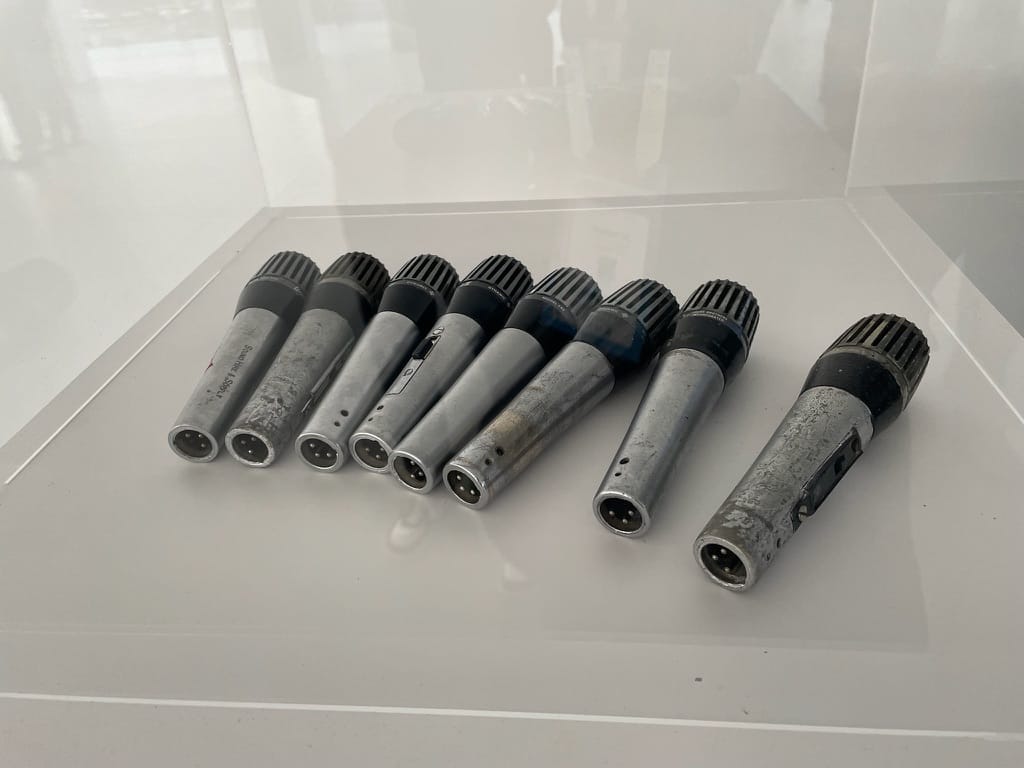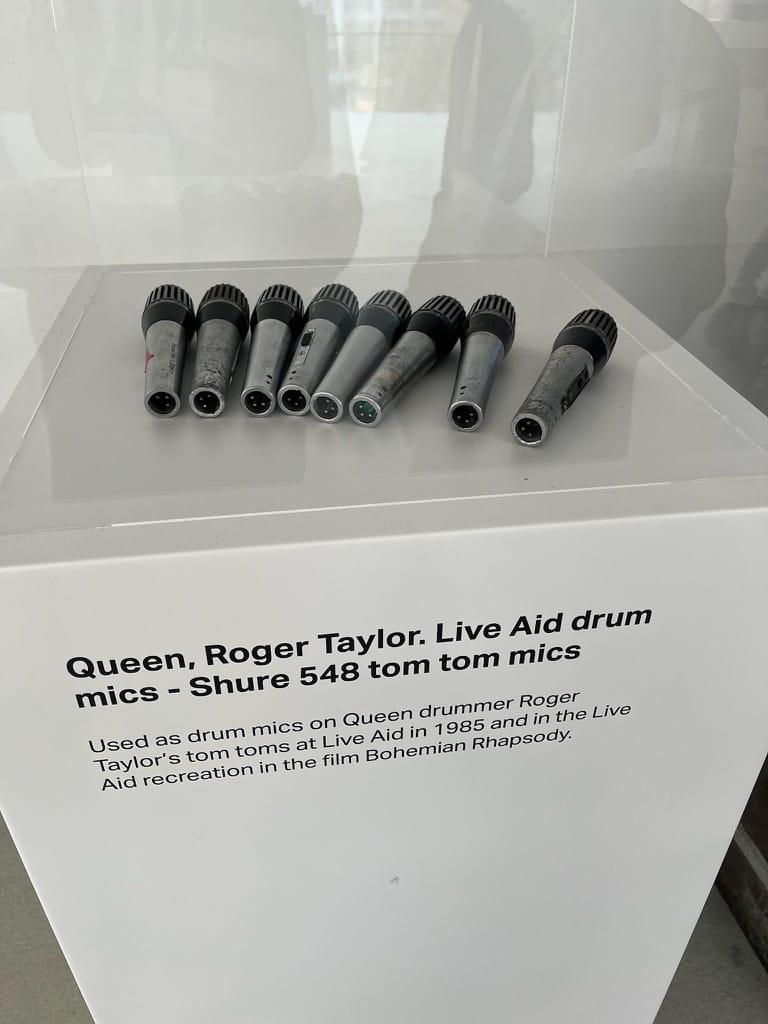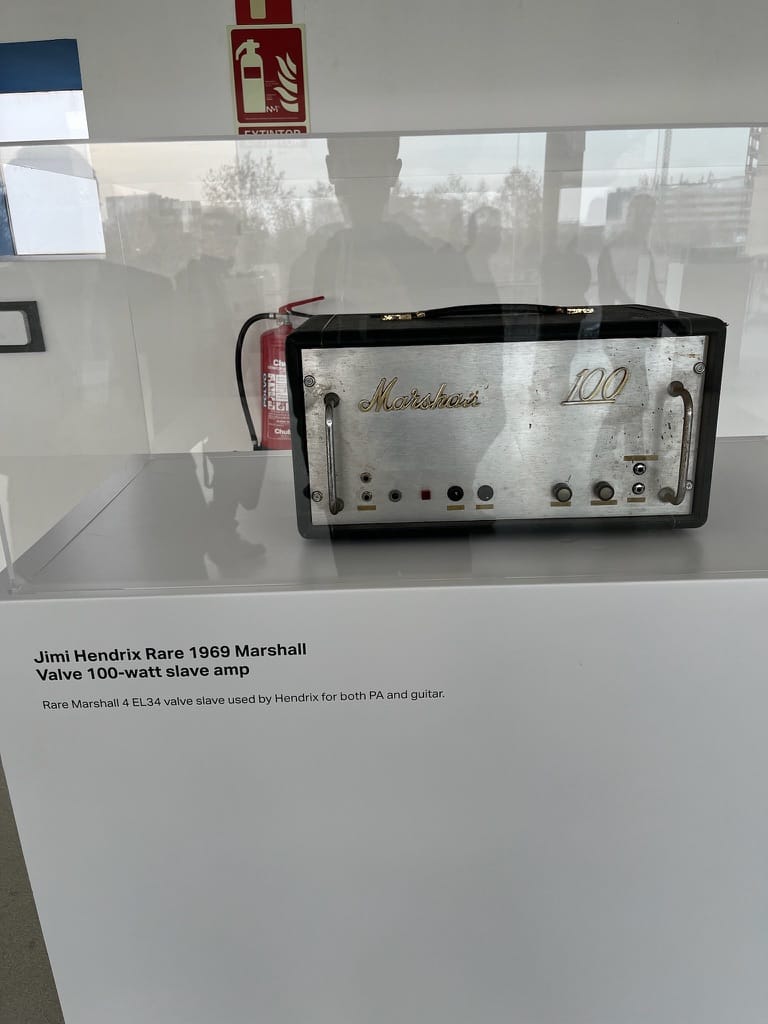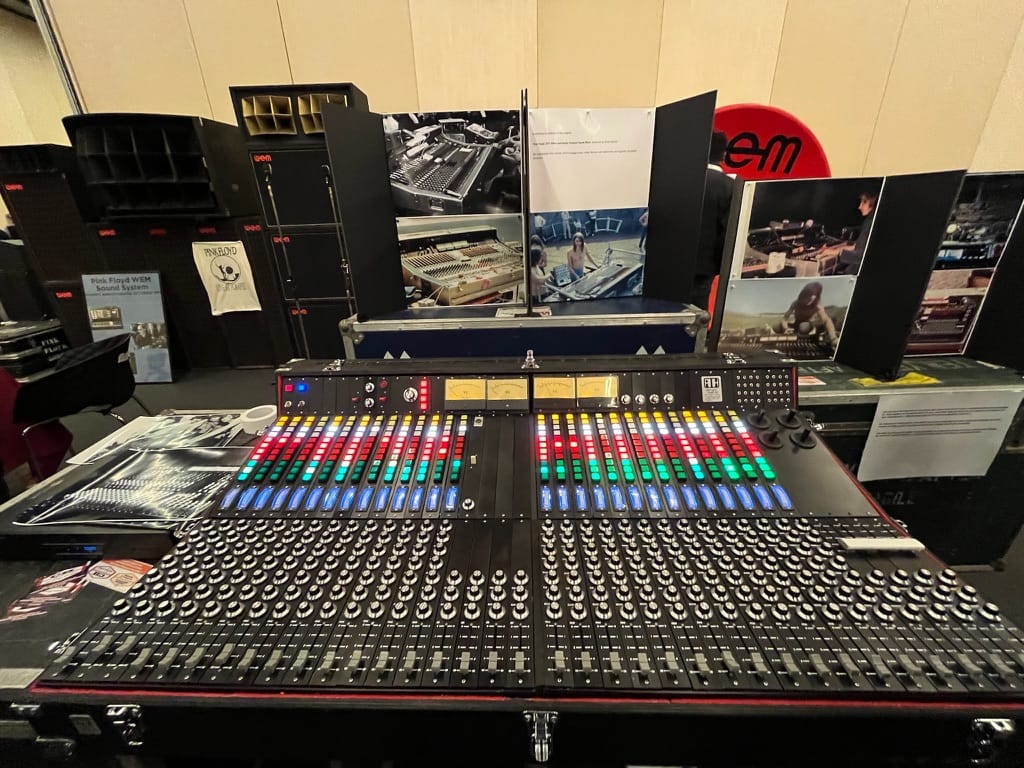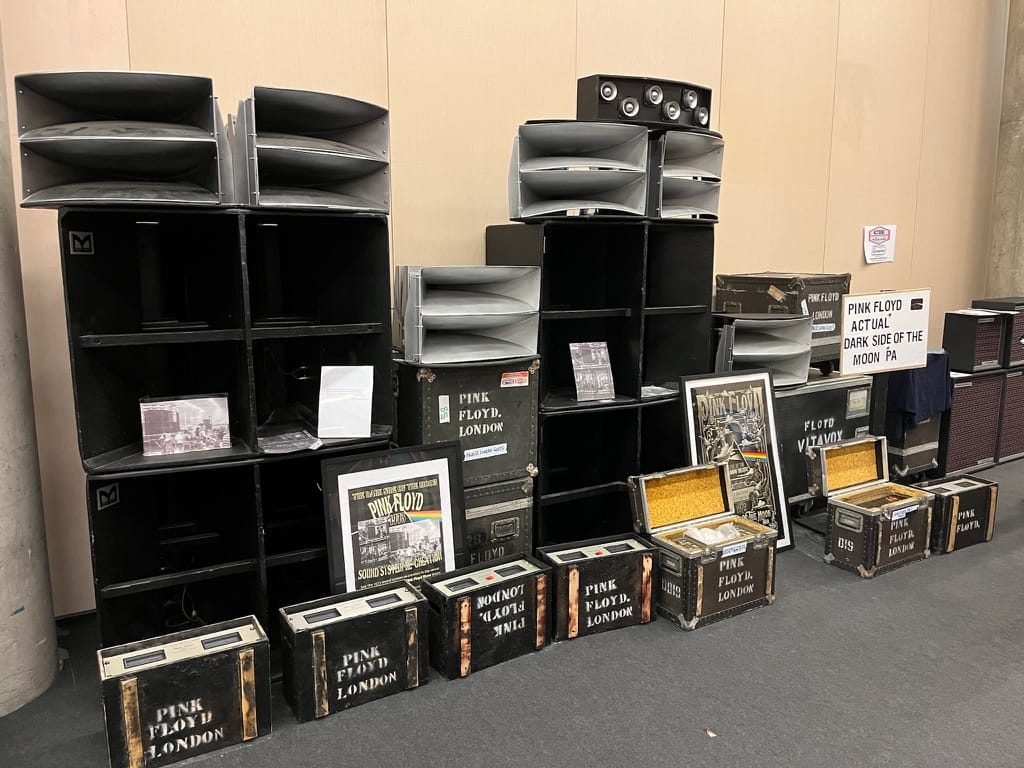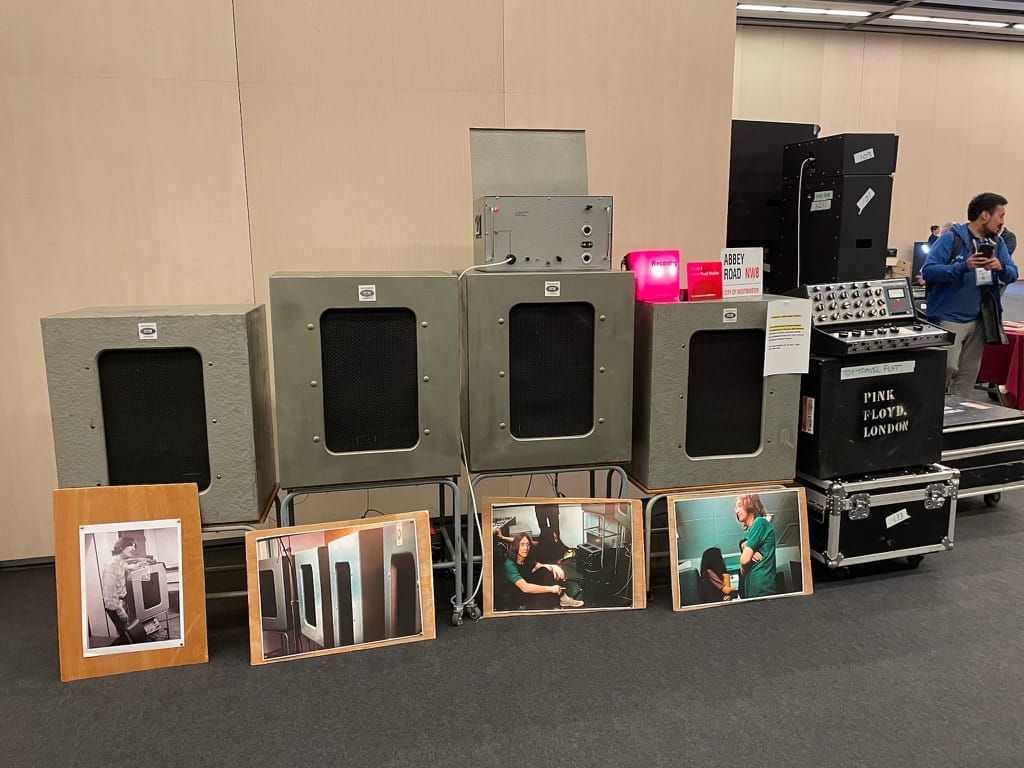Integrated Systems Europe 2024
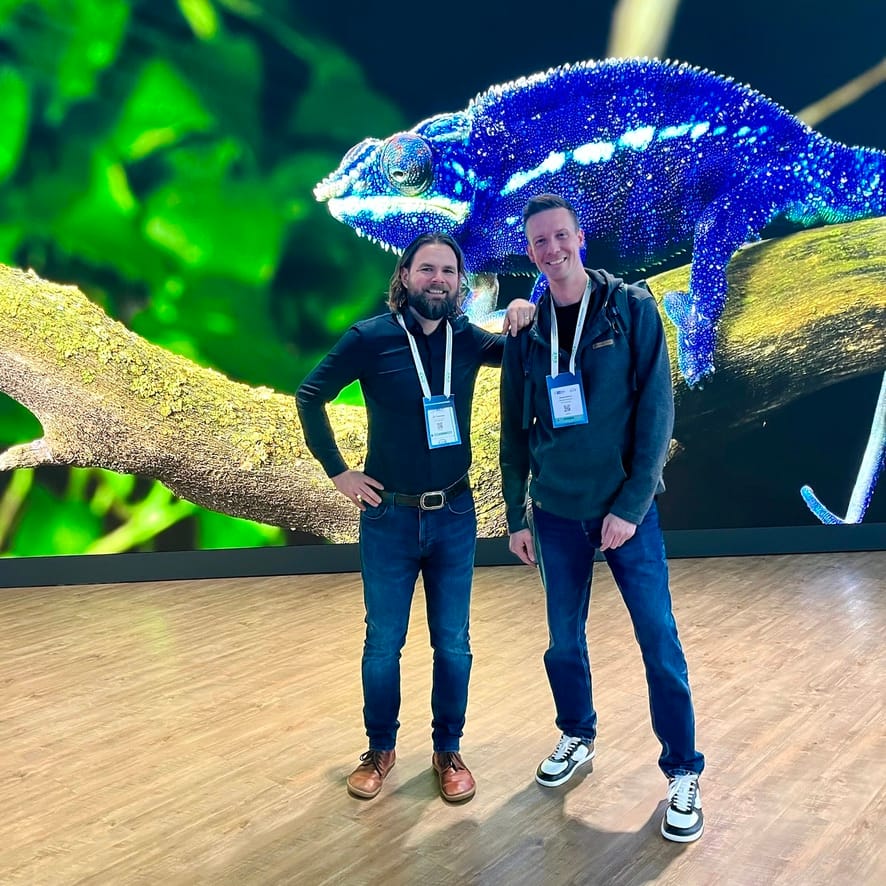
After five years we are at the largest audiovisual technology and integration fair in Europe! What attracted us and what did we bring back?
Two of us went to ISE. My colleague and I agreed on the spot that the last time we both attended was in 2019, when the fair was in Amsterdam. Back then, we didn't know each other and the Simulation Centre was still under construction. Let's face it, the January-February weather is really nicer in Barcelona than in (then-rainy) Amsterdam.
We were given three days for the fair, which took place between 30 January and 2 February. It was not possible to fly earlier, as I attended the meeting of the V4 Network of Medical Simulation Centres: Building Good Practices in Warsaw. And it was almost not enough. But enough talking, let's summarize the most interesting bits we saw.
Canon: autotracking PTZ cameras and 3D/VR lenses
The Canon booth was the first one we stopped by. We went for the safe bet - we wanted to see the CR-N700 autotracking camera, and its more affordable sisters. We'd really like them, especially for our fully hybrid classrooms.
I won't go into too much detail. The technical specifications can be found on the manufacturer's website. But what caught our attention was the information that autotracking, i.e. speaker tracking, can be purchased for the cheaper models. This was new and important information for us.
Canon CR-N700 in action
The second product that caught our eye was the Canon RF 5.2mm F2.8L dual fisheye lens. Honestly, somehow I've never been interested in those dual lens cameras. However, when we put VR goggles on and got immersed in a video recording of a CT scan in a virtual reality environment, I was mesmerized. We need to try this at SIMU!
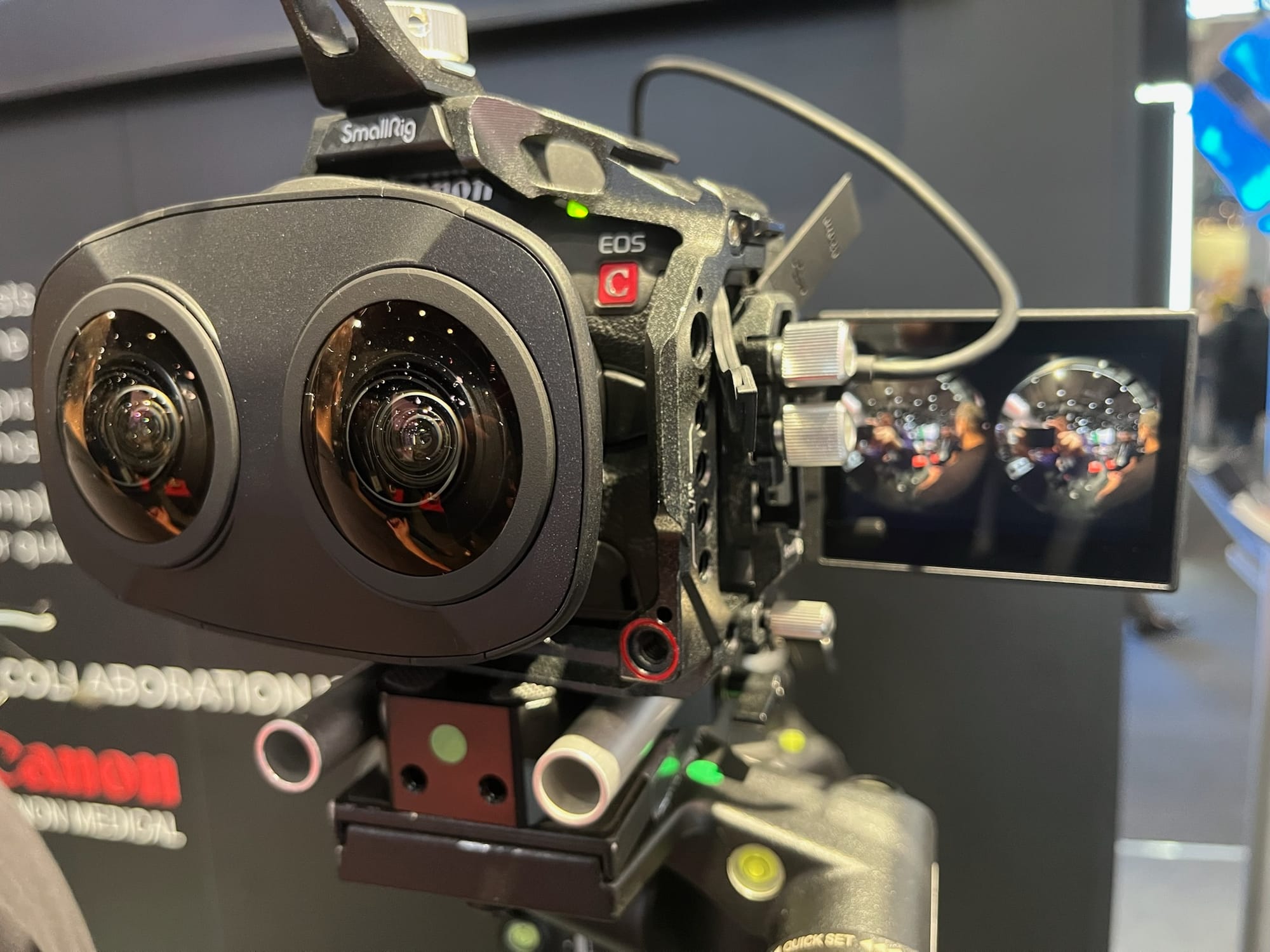
Focusrite RedNet PCIeR Dante card
PCI Express sound card with 128 input and 128 output Dante channels. There's a really long story attached to it, though, so you can understand why it's so special.
Around 2021, when the first students had been in our simulation center for a while and the installation, commissioning and setup of the technology (at least the initial one) was behind us, we began to address the topic of ensuring high availability. It's hard to teach when technology doesn't work. Servers are typically the first element administrators focus on.
We have everything double, triple. Except the dedicated card in one server for recording audio from simulations. It's a special 128-channel Dante card, and if it should happen to fail one day, we won't be simulating. Never mind that we have spare servers available.
And so we began to check on the availability of a replacement or a backup card. Surprisingly, it was nowhere to be found. The chip crisis led to a production shutdown and the shelves were empty.
A couple years later, in February 2024, we're walking down the trade show hall and the mythical Phoenix strikes me in the eye. I reach the display cabinet and ask the Focusrite salesman a simple question, "What is this?" And he starts describing the specs of a card I've been looking for for years. I stop him and explain that I know what it is, but I don't understand why I see it. I mean, Focusrite doesn't even sell it.
"But it does. In Europe, starting Saturday," he replies. Since Saturday, I laugh in my head.
So on Monday I write to the integrator. He says we can't take everything a manufacturer says at a trade show completely seriously. And that they'll check with the supplier. Ten minutes later, a message on my cell phone. The card exists! And there is even one in stock in the Czech Republic. The mythical Phoenix can be purchased again and we no longer have to wonder what we would do if the only one we have fails.
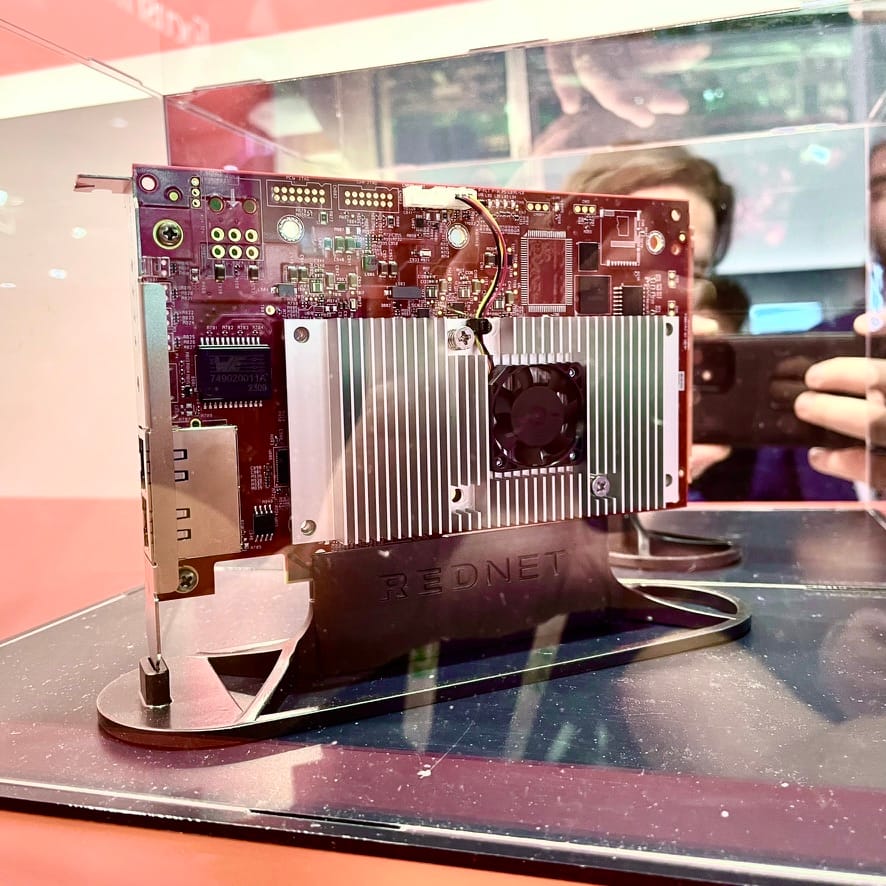
Logitech Scribe, whiteboard content streaming camera
It was almost necessary to dedicate a significant chunk of time to video conferencing. SIMU is a modern space and video conferencing is literally our daily bread.
The university actively uses Microsoft products, so we stopped by the Logitech booth. We were intrigued by the Logitech Scribe camera. A camera designed to capture what you draw on a whiteboard. Plus, it subtracts hands using math, so conference attendees really only see the writing and drawings on the whiteboard. Nice, we like that.
But it also raises questions. How would we install such a thing in a finished building? We're told that a single Ethernet cable would be enough. The camera is PoE powered.
Will people use it? Who's going to think about constantly switching cameras? We discovered a Bluetooth button that can be placed on the whiteboard and clicked to activate Logitech Scribe.
And then another thought occurs to us. What if we mounted such a camera on a mobile flipchart and had it available anywhere on SIMU?
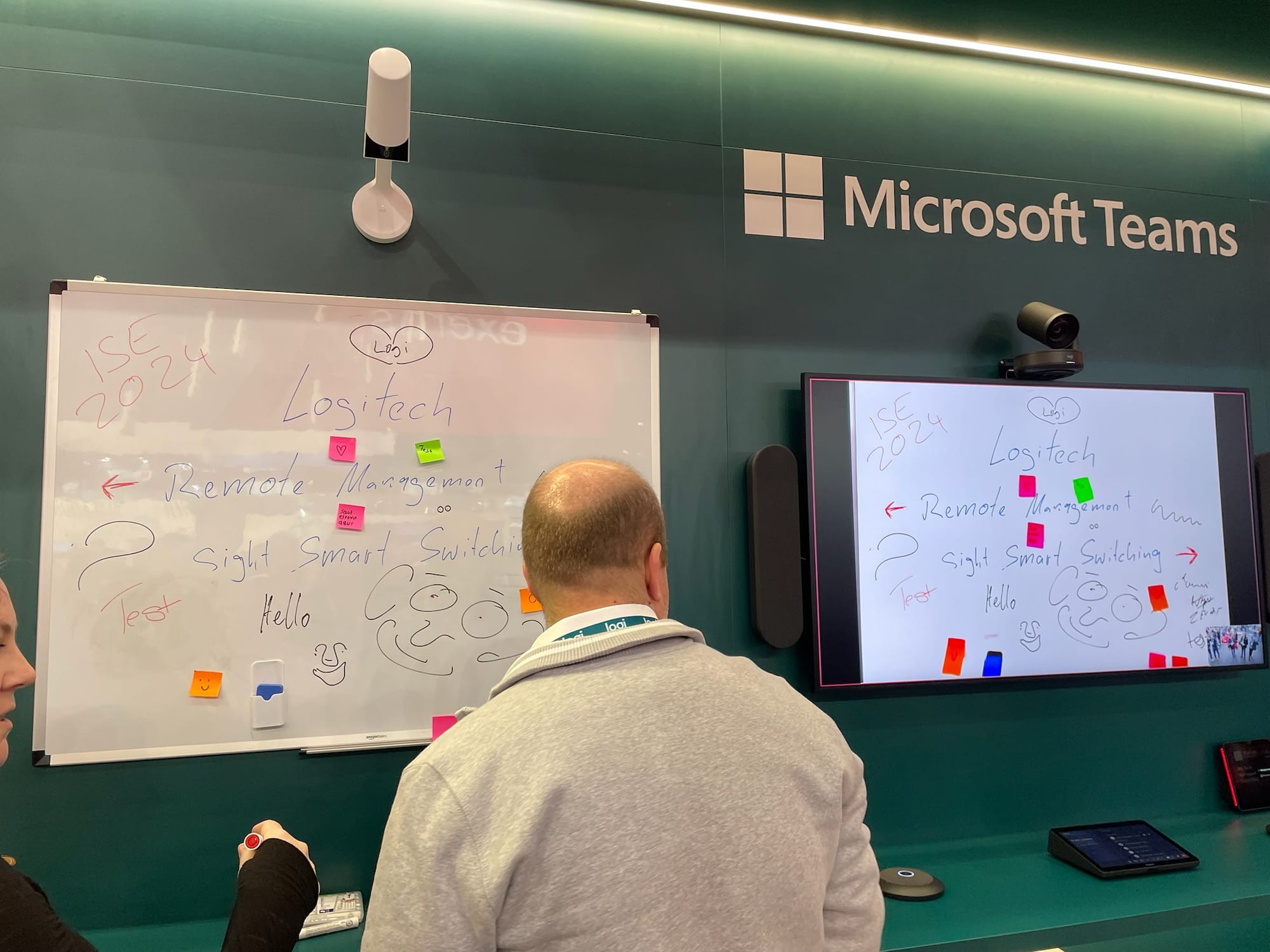
Cisco: Microsoft Teams Room mode
We also stopped by the Cisco booth. We weren't surprised to see a presentation of hardware units, video conferencing on Cisco codec, and a presentation of software conferencing on Cisco hardware. Especially the Microsoft Teams Rooms mode.
We tried out the products, and then sighed loudly that we own a Cisco Room Kit Pro and can forget about Microsoft Teams Rooms. We were corrected to our amazement. MTR can be run on the Cisco Room Kit Pro. You just have to go through a factory reset and put the entire Cisco into MTR mode.
Interesting. Very interesting. Time to contact our integrator and ask for advice...
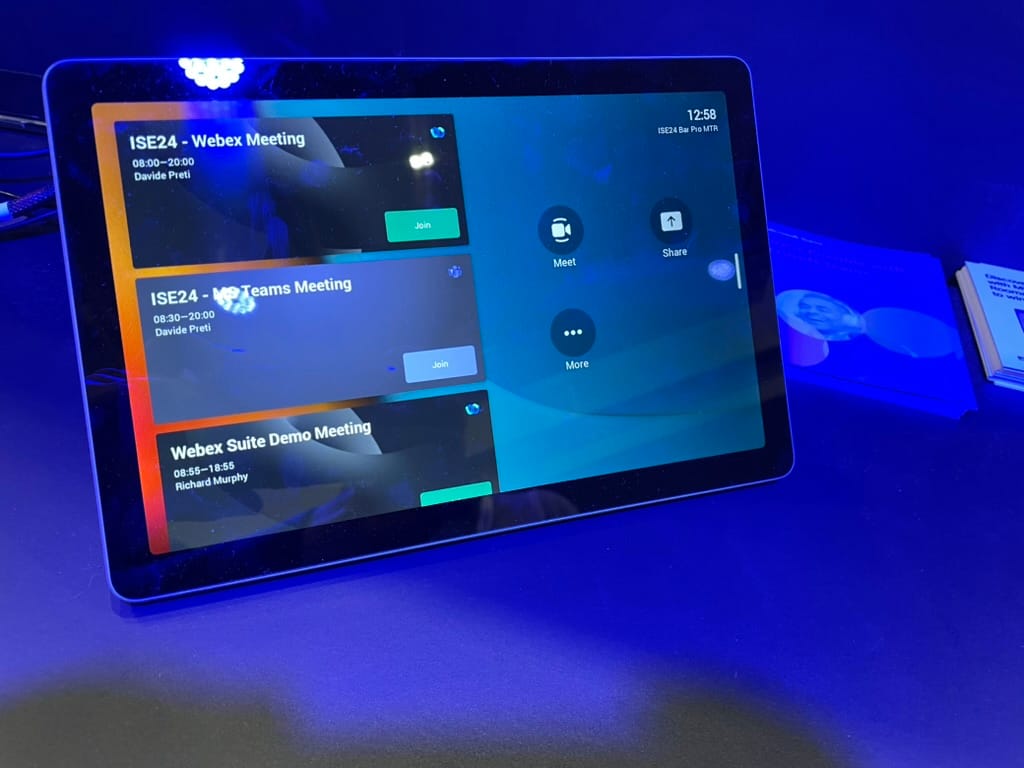
Bose S1 Pro+
We are constantly inventing and trying to improve. We are looking for a sound system for one of our projects. It should be a mobile debriefing room. We want to have equipment that we can move around and create a debriefing right where we need it. Sound is key and so we left for ISE with no clear idea.
We were impressed with the Bose S1 Pro+. A portable, robust speaker with a beautiful, clear and loud sound. And then we began to embrace its strengths. The ability to install it at different angles. The ability to connect three audio inputs. The possibility of connecting the sound source wirelessly using a special dongle, which can also be charged in the speaker's body, made our eyes light up. And at that moment it was clear to us that the speaker would also contain a sizable battery, which makes it a truly mobile beast.
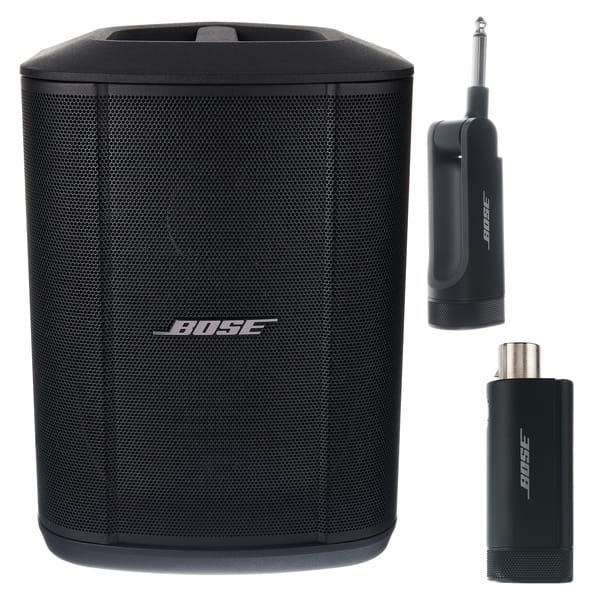
And then the gimmick. Thanks to wireless dongles, the speakers can be made into a daisy chain. The source can be a mixing console or another speaker system. From there, you send the signal to the speakers and sound multiple rooms or a structured space.
Little pearls from around the world AV
Of course, we saw many great products from all corners of the audiovisual world. We mean geographically and in terms of portfolio. We liked the outdoor speakers from Pequod Acoustics, the giant LCD "The Wall" of Samsung, the DeLorean DMC-12, products from LD Systems, BlackMagic Design, as well as semi-transparent panels and a giant 8-meter LED (with 0.9 mm pitch!) from Lang.
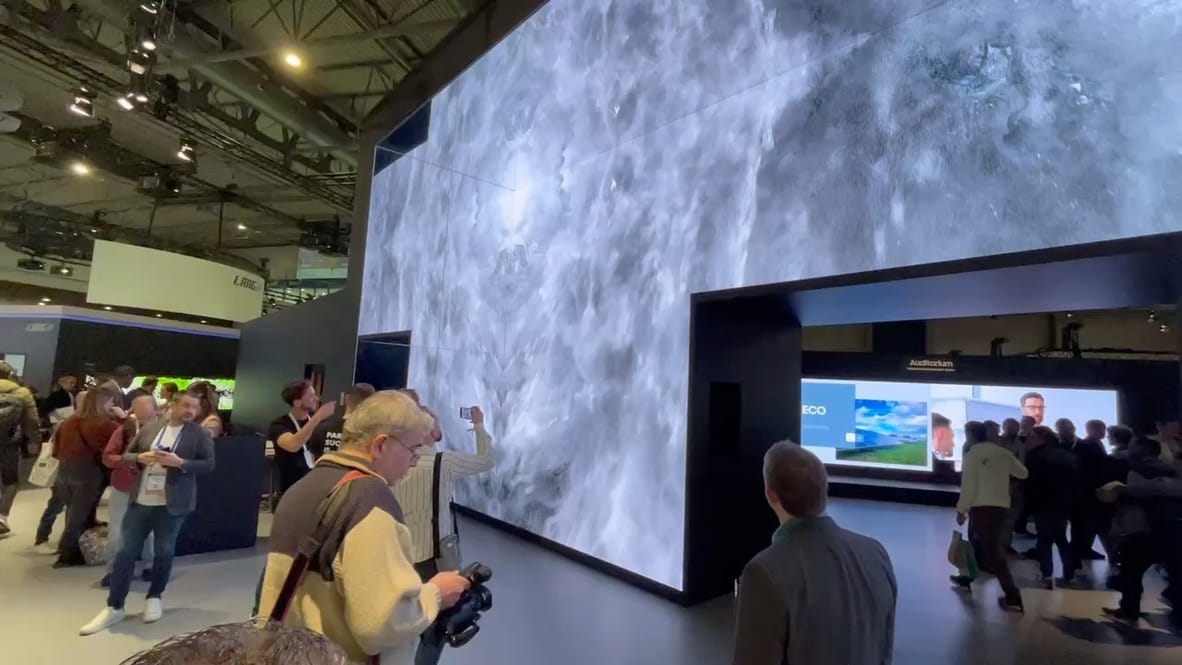
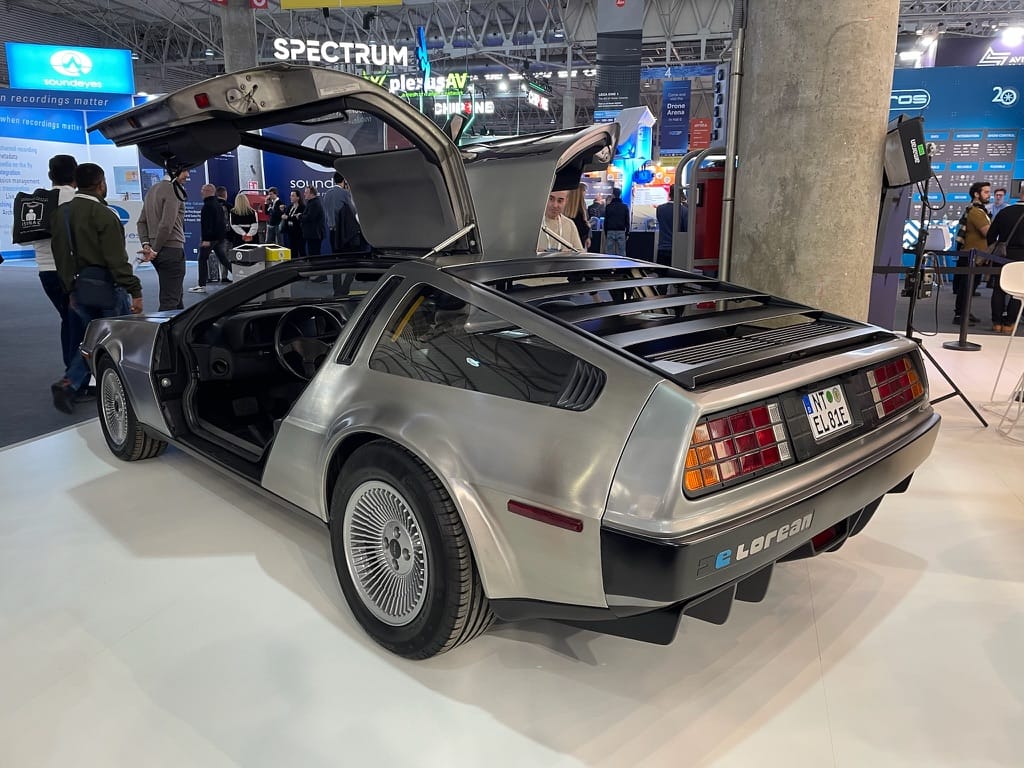
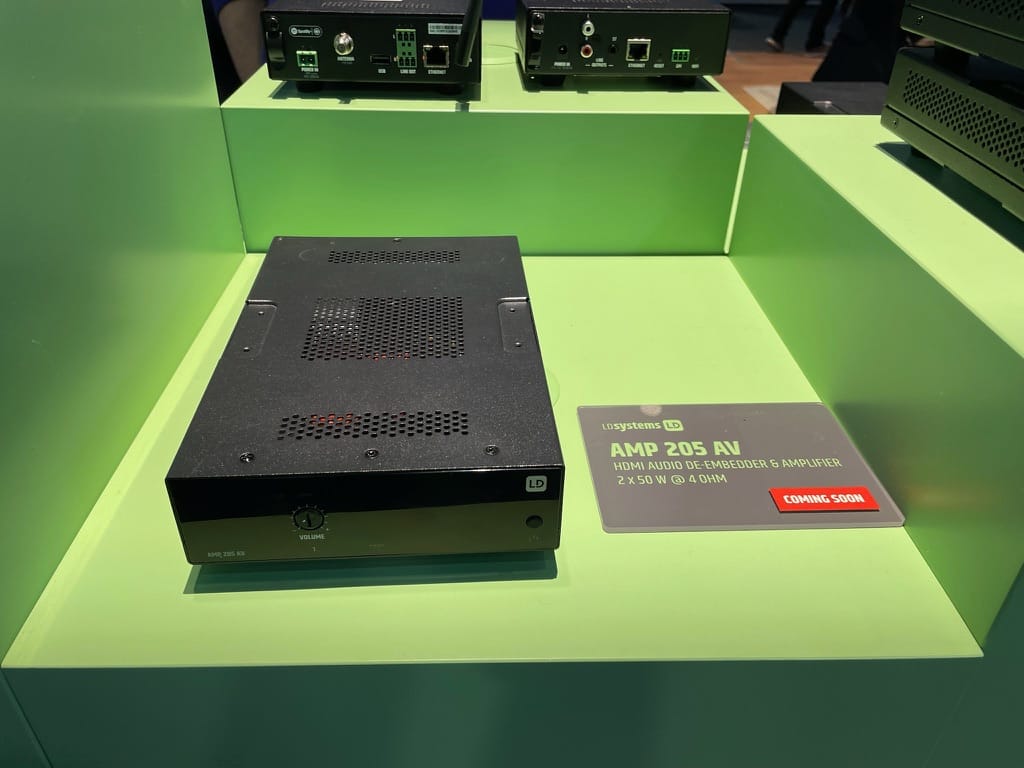
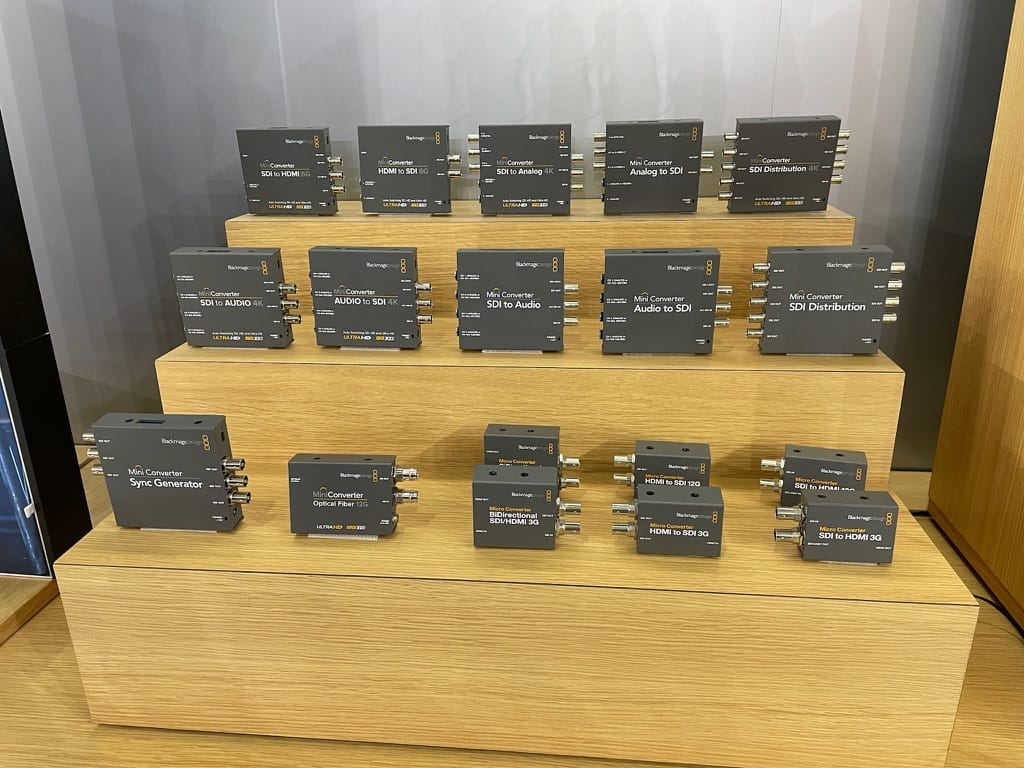
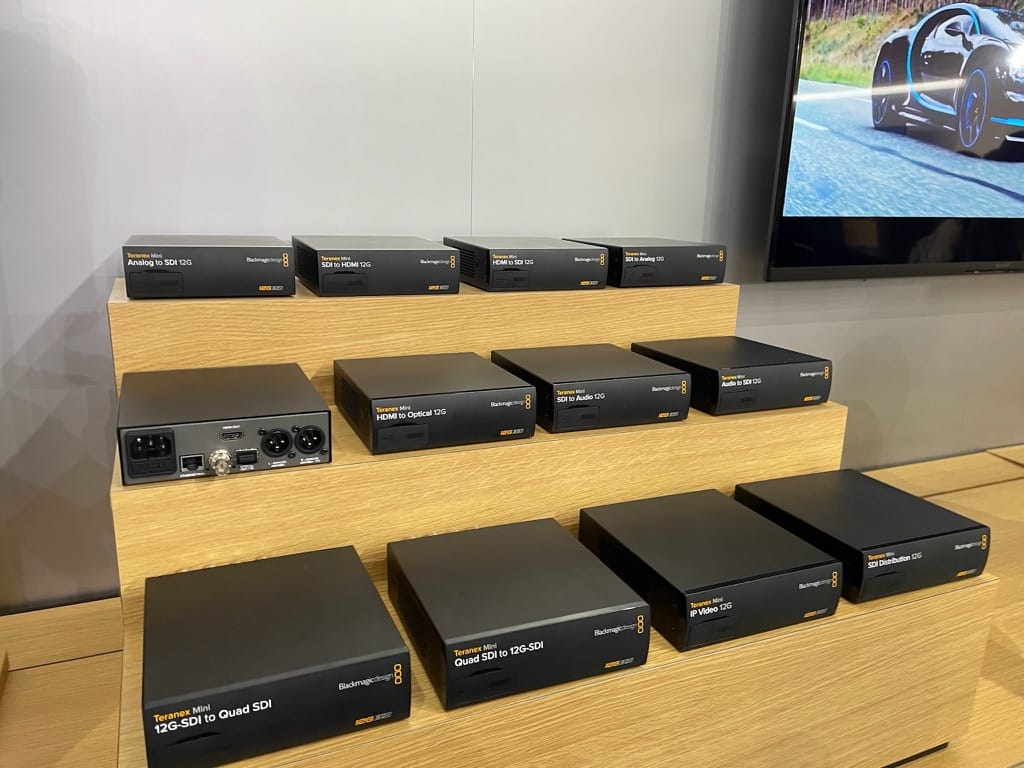
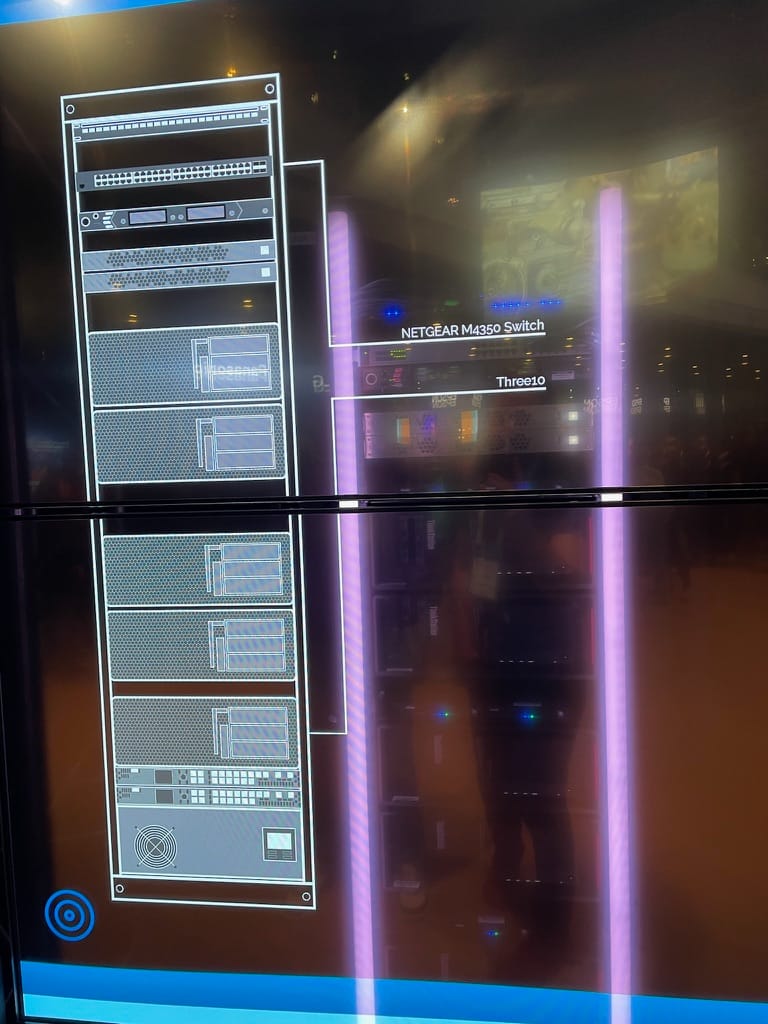
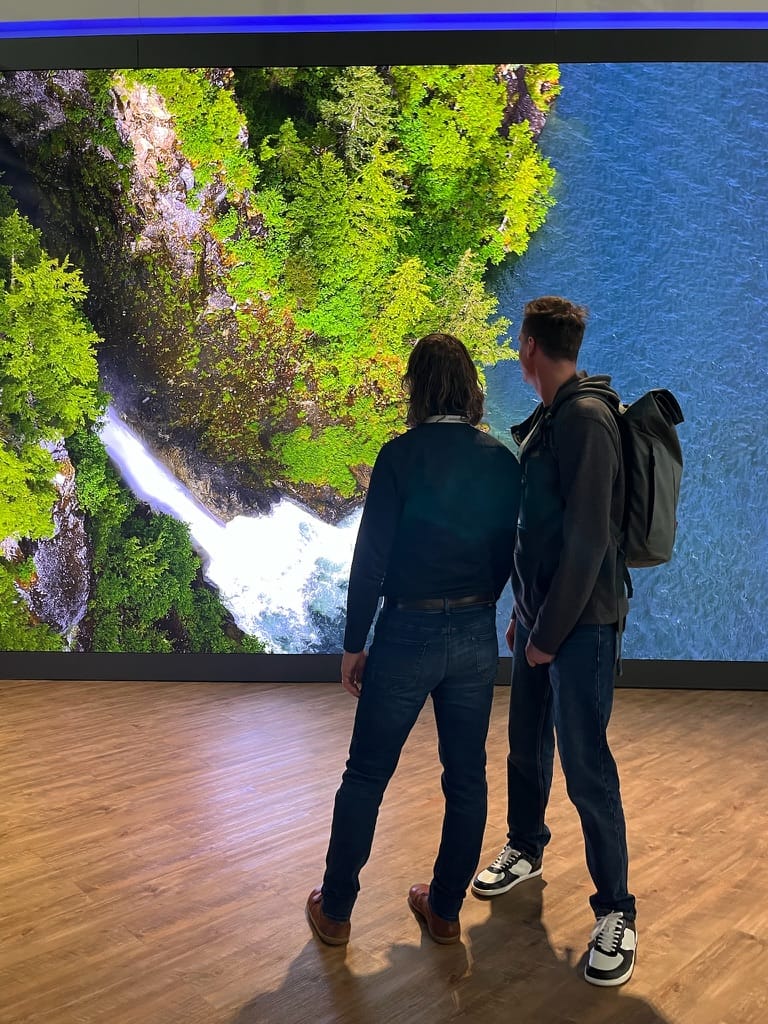
Other treats were undoubtedly the Bang & Olufsen Beolab 90 listening system, the beautiful bar by McIntosh, and the foldable outdoor LED from Vienna's C SEED.
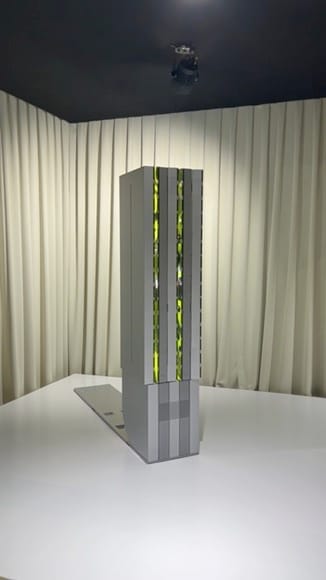
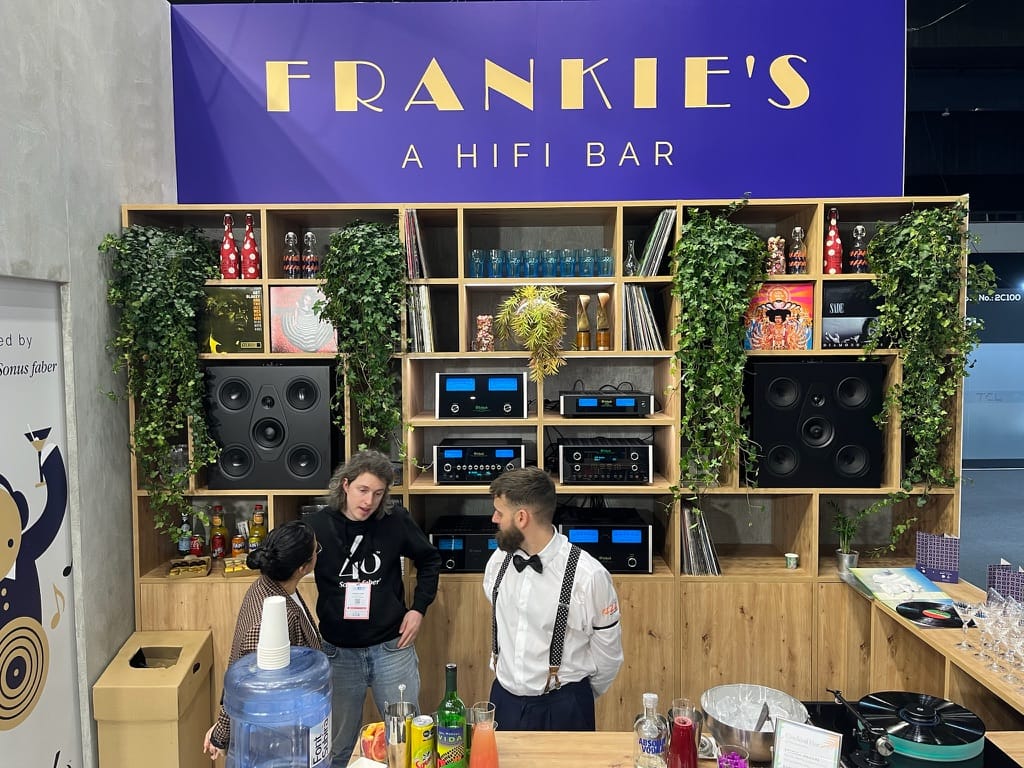
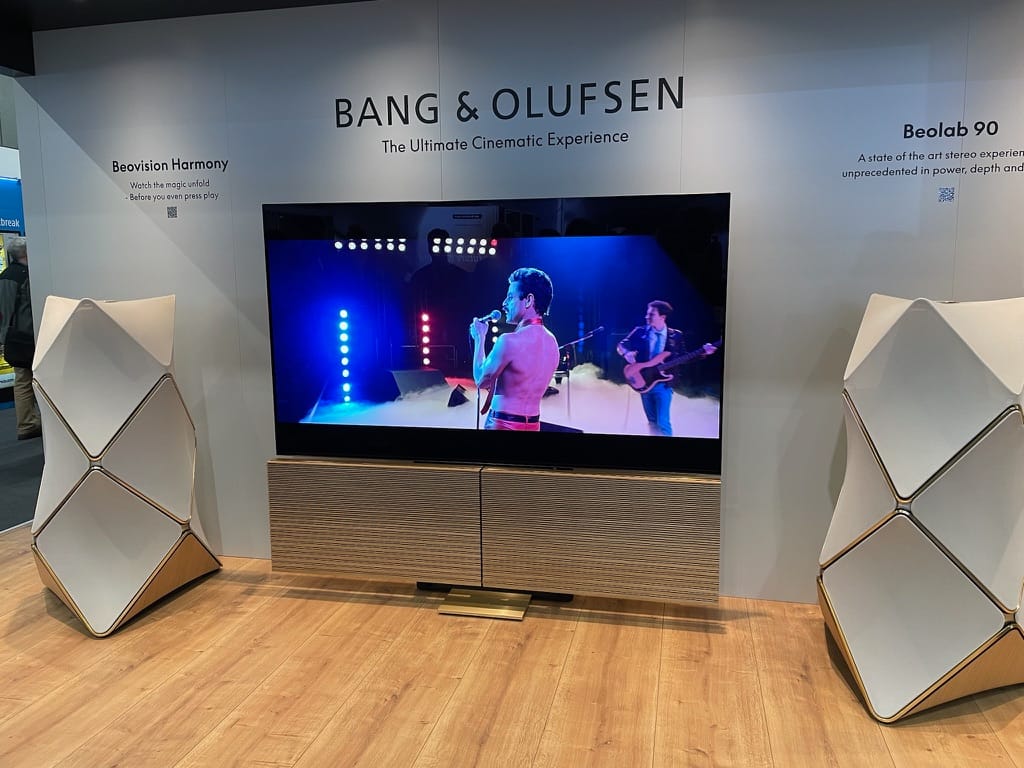
Those who had enough time and the strength in their legs made it to the end of the exhibition halls. The opportunity to stand next to the original apparatus with a connection to The Beatles, Pink Floyd, Queen or David Bowie was well worth the walk.
